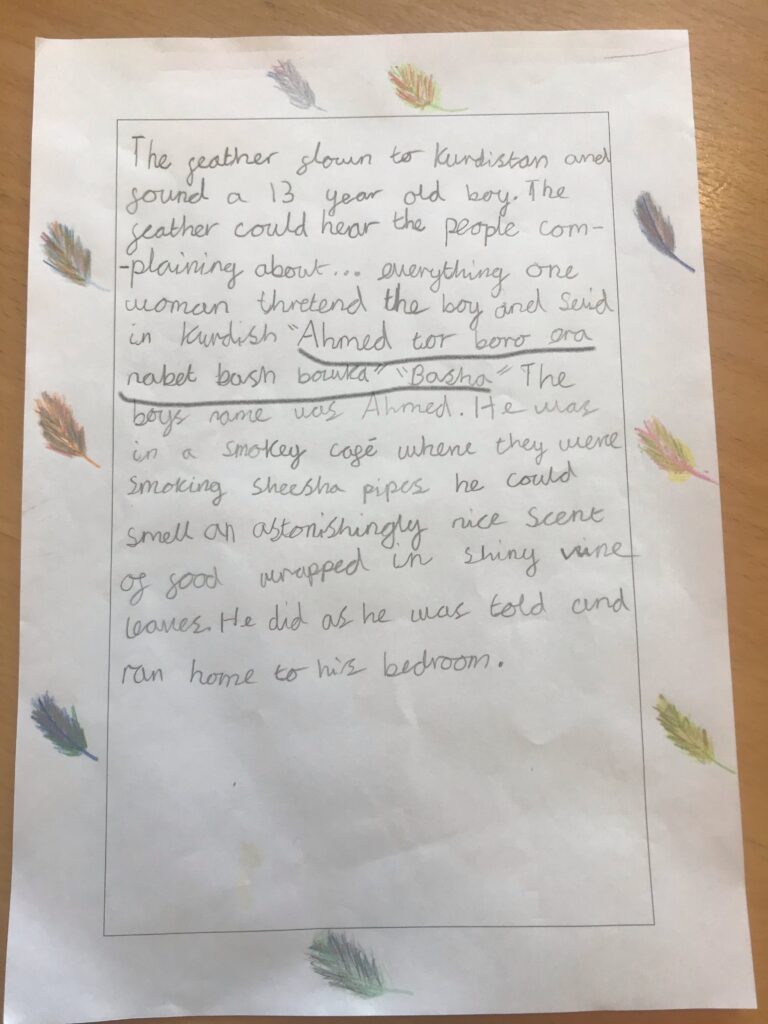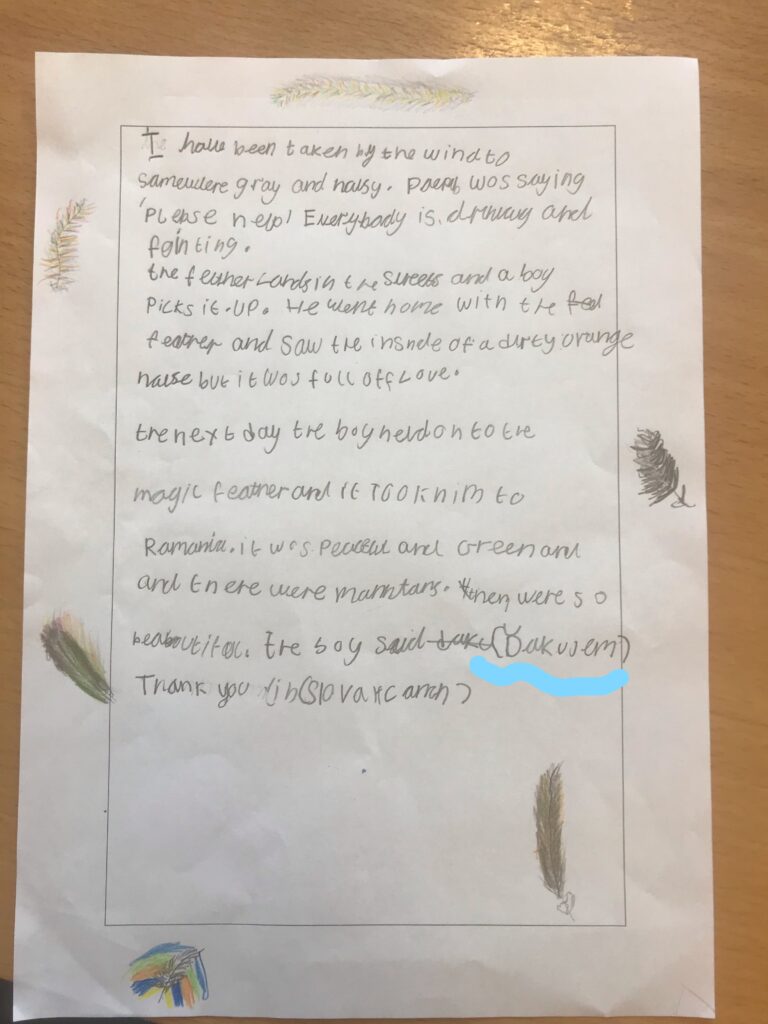Over the summer of 2021, a total of nine Masters students were working on the Lost Wor(l)ds project as part of their dissertation. Over the next few weeks, some of them will be outlining their work. Today, Minshan Zhang explores translanguaging and multilingual story writing as part of the 100 Feathers activity.
I am an MA student who has just finished my dissertation project. My research project is about multilingualism in mainstream classrooms. My interest about multilingualism was initiated by my previous job experience. Working at an international school which holds students from a wide range of linguistic and cultural backgrounds has offered me an opportunity to observe how students from a different linguistic and cultural background use their language at school. Gradually, I thought about the possibility of utilising the home language in the classroom setting and in order to get more inspirations, in 2019, I attended The Inclusion, Mobility and Multilingual Education Conference which explored the role of languages for education and development. It was on that occasion communicating with other researchers that I was determined to do proper research by taking a master’s course. It has been very lucky for me coming across Lost Wor(l)ds Project which aims to promote multilingualism and multiculturalism in classrooms when we were required to decide our dissertation topic.
I wanted to research what happened when a space was provided to the students for their use of home language or other language resources that they have, in particular, I am interested in the language use in story writing activity. In order to explore the affordances of multilingual story writing activity, I came up with two research questions: what themes do children identify in their stories? To what extent do students apply their full linguistic repertoire in the multilingual story writing activity? To address those questions, stories written by pupils at primary schools in Sheffield were collected and analysed. Stories were collected in an activity called ‘100 Feathers’. The activity was part of the annual Migration Matters Festival and thus pupils’ story-writing about migration was supported by the classroom teacher. Students were invited to write in any language that they were comfortable with and confident in, be it English, their home language, any other language that they know or a mix of some, depending on the need of expression.

There are quite a few interesting findings after analysing the stories. Themes were identified drawing on sociocultural theory and translanguaging theory. Those themes informed us about students’ linguistic repertoire as well as their cultural funds of knowledge beyond the use of language and their understandings about migration. In a space where students were allowed to demonstrate their language resources either in a conventional way or a creative way, it can be seen that students’ command on language was limited, in use of simple English and two cases of code switching. Nevertheless, students have demonstrated their language awareness knowing Kurdish spoken in Kurdistan and Slovak in Romania and detailed references to culturally specific food or entertainment, namely fried rice with pondu and Shisha. This would be a positive sign to promote critical language awareness and cultural exchange in the lingua franca (English). In the stories, students also showcased their understanding about migration. This is a finding to reflect on what to include in the promotion of multilingualism. Immigrant students’ dual attachment to their original culture and adaptation to new culture is a strength, showing their potential as intercultural citizens. Some issues that they mentioned, namely refugees, racism and religion, have indicated their foundation knowledge about global issues, which can be developed further in future lessons. Being a global citizen includes having an open mind for multilingualism, encouraging the use of varied languages.

In conclusion, language is an important symbol in culture and identity but it is not always the case that students have the knowledge of their home language or the confidence to use their home language. In such a case, it is worth thinking of other initiatives, such as collaboration with parents. Since students may not be used to using their home language in the classroom, it can also take some time to promote such a concept, which can first advocate the value of minority culture, intercultural competence and be aware of global issues.
The project has added to my understanding about multilingualism. It is rather a concept to promote diversity and equity than an action of tokenistic-ally impose a variety of languages. There are still a lot to be researched and to critically be applied to specific settings. My dissertation project also inspired me to do more research about it, possible going for PhD research.